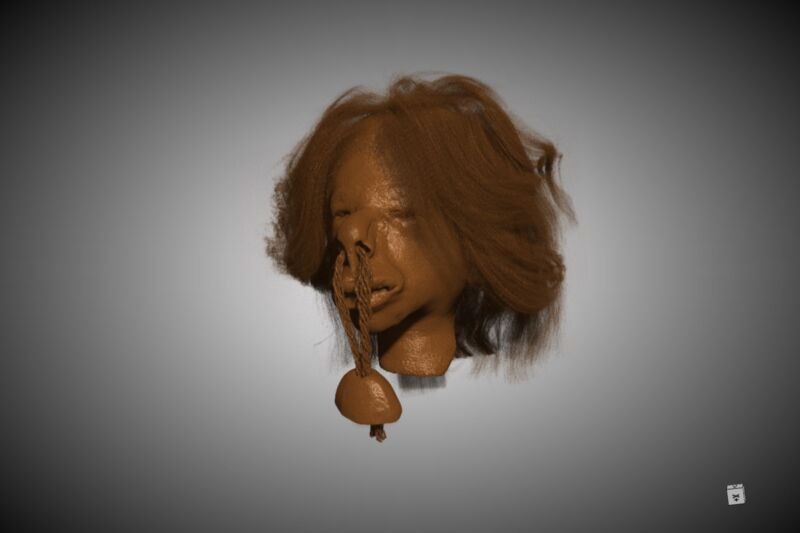Is that shrunken head really human? Combining imaging methods yields clues

Enlarge / 3D rendered image of the micro-CT scan of a tsantsa, or shrunken head. (credit: Andrew Nelson, CC-BY 4.0)
There's rarely time to write about every cool science-y story that comes our way. So this year, we're once again running a special Twelve Days of Christmas series of posts, highlighting one science story that fell through the cracks in 2020, each day from December 25 through January 5. Today: Sophisticated imaging methods can be used to authenticate whether the shrunken heads (tsantsas) in museum collections are genuine.
In Tim Burton's 1993 animated feature The Nightmare Before Christmas, there's a scene where a little boy receives a shrunken head as a Christmas gift from Jack Skellington. It does not go over well, with either the boy or his parents. But there was a time in the early 20th century when these macabre objects were in such great demand by Western collectors that it triggered a lucrative market for counterfeits. Many museums around the world count shrunken heads (known as tsantsas by the Shuar people) among their collections, but how can curators determine if those items are authentic? Certain sophisticated imaging methods can help, according to an August paper published in the journal PLoS One.
The practice of headhunting and making shrunken heads has mostly been documented in northwestern parts of the Amazon rainforest, as well as among certain tribes in Ecuador and Peru, like the Shuar. Accounts conflict on the specific details of the manufacturing process. But the tsantsas were typically created by removing the skin and flesh from the skull's cranium via an incision on the back of the ear, and then discarding the skull. The nostrils were packed with red seeds and the lips sewn shut. Next, the skin was boiled in water saturated with tannin-rich herbs for 15 minutes to two hours, so that the fat and grease would float to the top. This also caused the skin to contract and thicken. Then the head was dried with hot rocks and molded back into something resembling human features and the eyes were sewn shut. As a final touch the skin was rubbed with charcoal ash-apparently to keep the avenging soul from escaping-and sometimes beads, feathers, or other adornments were added for decoration.